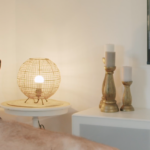Rehab At Home: What Is An “Experience Book”?

Experience books are a fun, easy, and inexpensive way to develop your child’s listening, language, and speech skills. We’re going to look more at what an experience book is and explain some ways you can use one to help your child’s language skills.
An experience book is a personalized book you make with your child about an activity, experience, holiday, or outing. Experience books are an effective resource for teaching your child, as they can:
- Help to spark your child’s interest in books and reading. The experience book is about them, after all!
- Allow your child to practice the same skills over and over as you share the experience book together and read the book with family and friends
- Allow you to target a specific speech or language skill
- Act as a link between real-life experiences and books
- Help your child to remember and recall new words that they learnt during a particular outing or experience
An experience book can be a small book about one topic, such as ‘Lucy’s trip to the Park’ or it can be a longer, ongoing book covering many different topics and experiences. It can be a traditional paper book that you make with your child and add photos, souvenirs, tickets and drawings. This allows your child to practice their fine motor skills while cutting, pasting and drawing pictures, writing sentences to go with the pictures and turning the pages. Alternatively, you can make experience books with an app such as ‘Story Creator’*. Using an app allows you to quickly and easily add your photos and text.
How Can I Use Experience Books To Help My Child’s Language Skills?
There are many ways you can use experience books to develop your child’s listening, language, and speech skills. Talk to your rehabilitation specialist about what your child’s current goals are and then make an experience book to practice those skills.
In this video, Penny and her mother are reading Penny’s experience book together. As they look at some of Penny’s favorite pages, Penny’s mother takes the opportunity to teach past tense verbs such as ‘splashed’. She uses acoustic highlighting to draw Penny’s attention to these verbs in sentences.
Here are some other ways you can use an experience book to teach your child new language:
How Can I Use An Experience Book With Younger Children?
- Teach family names: Add pages to your child’s experience book with photos of each family member. Write their names below the photos and practice using phrases such as ‘Hello Grandma’ when you look at these pages.
- Teach songs: Make a page in your child’s experience book with a picture that goes with the song. A star for ‘Twinkle, Twinkle, Little Star’ or a farmer and a range of animals for ‘Old McDonald’. Sing the song every time you look at this page of the experience book.
- Teach your child to understand and use action words: Take photos of your child doing different actions, e.g jumping, running, sleeping, riding their bicycle, playing, eating, or drinking. Add these photos to their experience book along with sentences to go with the photos e.g. ‘I am riding my bike’ or ‘Daddy is sleeping’.
How Can I Use An Experience Book With Older Children?
- Teach your child a particular speech sound: Make a page in their book for that sound. For example, if your child is practicing the ‘t’ sound, make a page in their experience book by sticking or drawing many pictures that begin with ‘t’ such as turtle, tea, taxi. Talk about the pictures and practice saying the ‘t’ sound when you look at this page together.
- Teach story sequences and how to retell an event: Take photos of your child during an outing or completing a task such as getting ready for school or making a sandwich. Add the photos to your child’s experience book and practice telling the story. Teach your child to use complete sentences to describe what is happening in each of the pictures. Depending on your child’s current level of skills, teach conjunctions, such as ‘after’, ‘then’ by using these words when you describe the pictures. Encourage your child to show the book to family members and visitors so your child has more practice in telling the story.
- Teach your child new or more complex vocabulary: Add photos to your child’s experience book of something you did together, such as baking a cake, then add phrases to go with the photos including the new words you would like to teach. For example, ‘Sam took all of the ingredients out of the fridge’, or ‘I poured in half of the milk’. Adding these ideas to your child’s experience book will allow you to go back and repeat these new words for your child.
- Teach your child about new routines such as starting school: Add photos of your child’s new classroom, their teacher, and their uniform. Add drawings of how your child will get to school and activities they will do while there. This will help your child to learn new vocabulary such as ‘uniform’ and ‘classroom’, but it will also help them to understand their new routine.
Interested in more from Rehab At Home? Check out all the videos on our Rehab At Home intro page.
Have you heard about SONNET 2? Discover how our latest cochlear implant audio processor is made for your child.
Find out more about how cochlear implants work and how they could help you or your child.
Living in the UK and thinking about cochlear implants for your child? Get in touch with Penny’s mom through the HearPeers Mentor Programme.
*MED-EL is not responsible for third-party content.
Thanks for your message. We will reply as soon as possible.
Send us a message
Field is required
John Doe
Field is required
name@mail.com
Field is required
What do you think?


